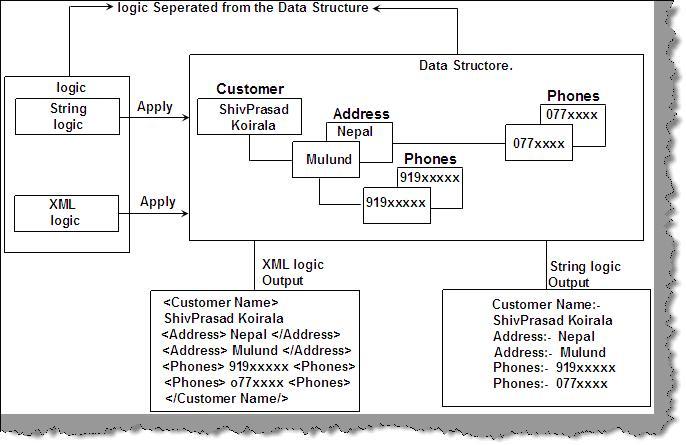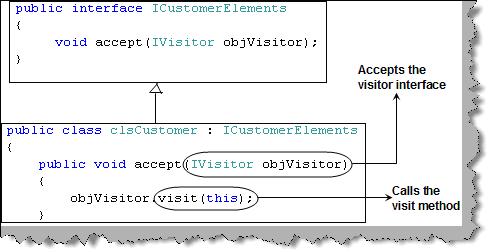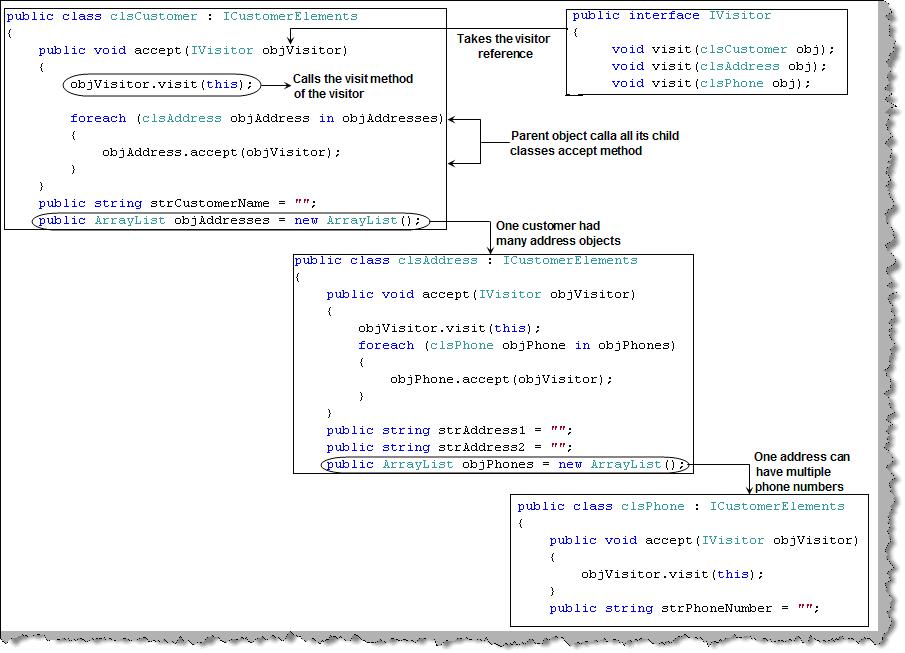Visitor pattern allows us to change the class structure with out changing the actual class. Its way of separating the logic and algorithm from the current data structure. Due to this you can add new logic to the current data structure with out altering the structure. Second you can alter the structure with out touching the logic.
Consider the below figure ‘Logic and data structure’ where we have a customer data structure. Every customer object has multiple address objects and every address object had multiple phone objects. This data structure needs to be displayed in two different formats one is simple string and second XML. So we have written two classes one is the string logic class and other is the XML logic class. These two classes traverse through the object structure and give the respective outputs. In short the visitor contains the logic.
 Figure: – Logic and data structure
Figure: – Logic and data structure
Let’s take the above customer sample and try to implement the same in C#. If you are from other programming you should be able to map the same accordingly. We have created two visitor classes one which will be used to parse for the string logic and other for XML. Both these classes have a visit method which takes each object and parses them accordingly. In order to maintain consistency we have implemented them from a common interface ‘IVisitor’.
 Figure :- Visitor class
Figure :- Visitor class
The above defined visitor class will be passed to the data structure class i.e. the customer class. So in the customer class we have passed the visitor class in an ‘Accept’ function. In the same function we pass this class type and call the visit function. The visit function is overloaded so it will call according to the class type passed.
 Figure: – Visitor passed to data structure class
Figure: – Visitor passed to data structure class
Now every customer has multiple address objects and every address has multiple phone objects. So we have ‘objAddresses’ arraylist object aggregated in the ‘clsCustomer’ class and ‘objPhones’ arraylist aggregated in the ‘clsAddress’ class. Every object has the accept method which takes the visitor class and passes himself in the visit function of the visitor class. As the visit function of the visitor class is overloaded it will call the appropriate visitor method as per polymorphism.
 Figure: – Customer, Address and phones
Figure: – Customer, Address and phones
Now that we have the logic in the visitor classes and data structure in the customer classes its time to use the same in the client. Below figure ‘Visitor client code’ shows a sample code snippet for using the visitor pattern. So we create the visitor object and pass it to the customer data class. If we want to display the customer object structure in a string format we create the ‘clsVisitorString’ and if we want to generate in XML format we create the ‘clsXML’ object and pass the same to the customer object data structure. You can easily see how the logic is now separated from the data structure.
 Figure: – Visitor client code
Figure: – Visitor client code